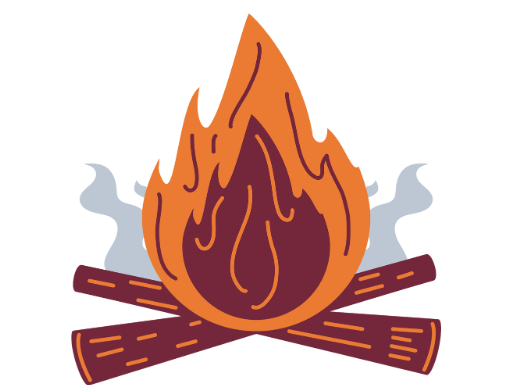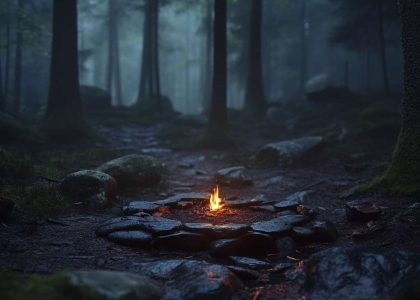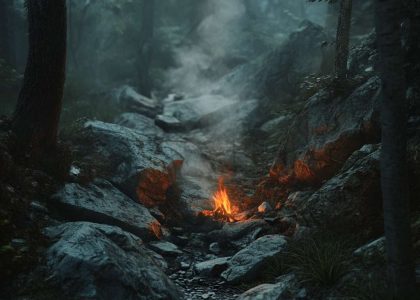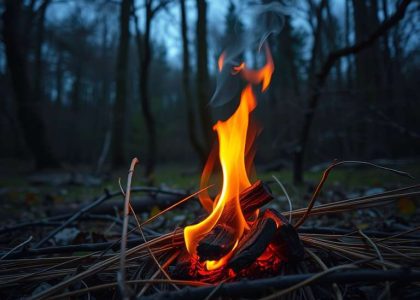Hello, dear readers! 🍂 As the chills of autumn start to settle in, many of us are preparing for cozy nights spent around the fire. Whether you’re planning a camping trip or a backyard gathering, knowing how to start a fire correctly is essential. However, fire starting can be trickier than it seems! I remember my first camping trip; I was so excited to impress my friends with my fire-making skills. But after several attempts involving soggy wood and too much kindling, I resorted to using our trusty lighter. It was a funny moment, and it taught me more about the common fire starting mistakes than I ever expected!
In my journey of mastering fire building, I’ve come across various pitfalls that many beginners face. To help you dodge those errors, I’m sharing some insights on how to avoid fire starting problems that can lead to frustration instead of the warmth and ambiance we all desire.
- Myth 1: Wood can be damp but still burn well if you just give it time.
Truth: Using dry wood is crucial for a successful fire. Damp wood creates more smoke and less heat, making it hard to maintain a flame. - Myth 2: You only need kindling and a match to start a fire.
Truth: While these are essential, having proper tinder and understanding fire layering is key to building a sustainable fire.
“The best way to predict the future is to create it.” – Peter Drucker
With this mindset, you can turn learning about fire making into an enjoyable experience! Whether it’s about perfecting fire building tips for beginners or mastering more advanced fire starting techniques, there’s always room for improvement and discovery. If you’re ever unsure, I highly recommend checking out this fantastic resource on how to start a fire with basic materials. It can provide you with invaluable information and inspire you to take your fire-starting game to the next level.
So grab your gear, gather your friends or family, and let’s embark on a journey of fire-making together! Whether you want warm cozy gatherings or just to enjoy the crackling sounds in the woods, let’s get fired up! 🔥
Understanding Common Fire Starting Mistakes
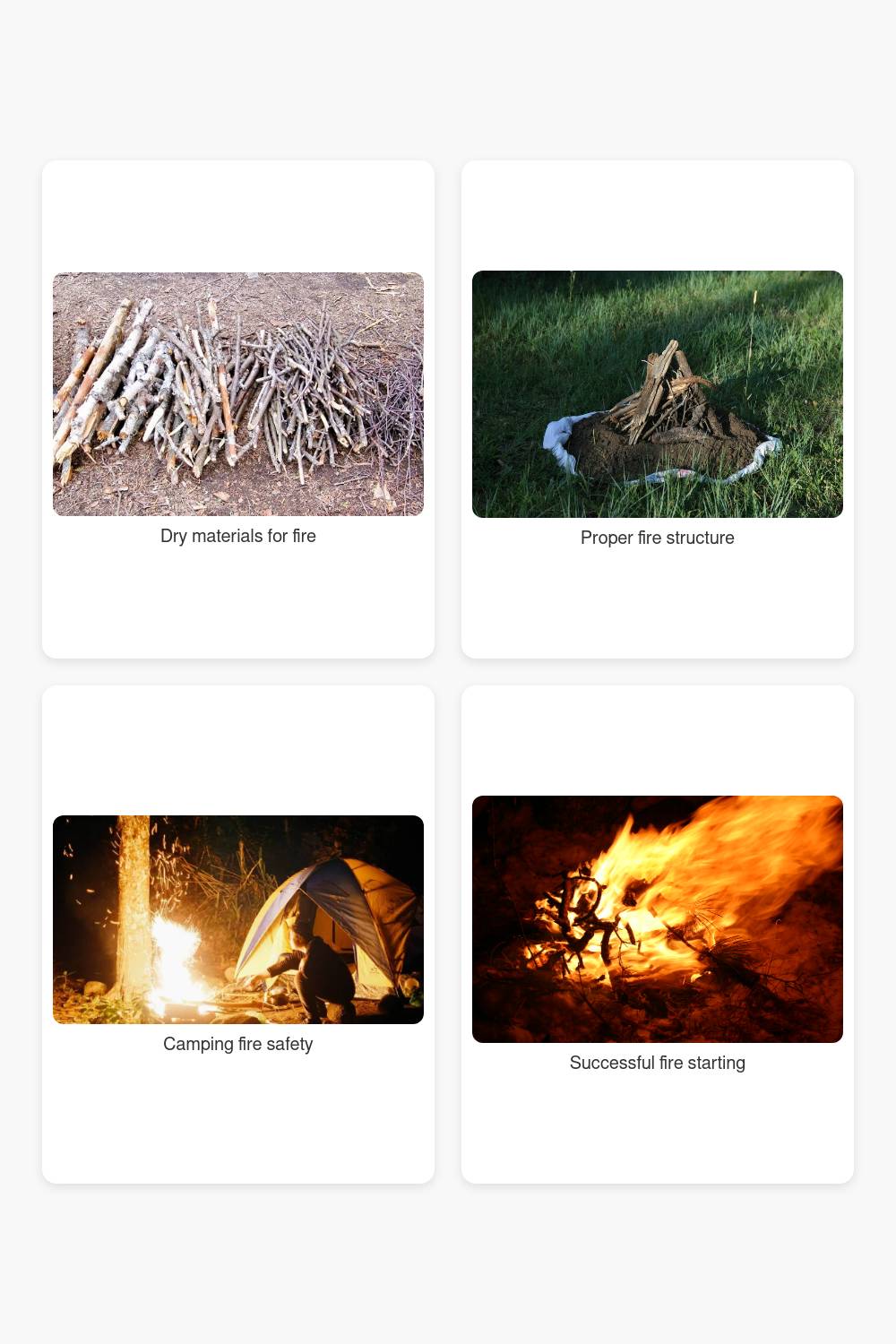
Starting a fire successfully requires more than just striking a match; it involves preparation, the right materials, and basic knowledge of fire dynamics. Unfortunately, many beginners find themselves fumbling through these crucial aspects, which can lead to frustrating experiences. Here are some of the most frequent pitfalls to avoid:
- Inadequate preparation: A common misstep is failing to gather essential dry materials beforehand. Without dry tinder and kindling, even the best fire-starters will struggle to ignite a flame. Materials like dry leaves, small twigs, or specialized igniters are vital to achieving and sustaining a fire.
- Lack of understanding of fire behavior: Not recognizing how to structure a fire can result in inefficient burns. Fire structures such as the teepee or log cabin shapes are designed to maximize airflow and combustion, reducing the likelihood of excess smoke and dead fire zones.
- Ignoring safety precautions: Many novices underestimate the importance of fire containment, often setting up too close to flammable materials. This oversight can lead to dangerous sparking and unintentional spreading of flames, especially in windy conditions.
- Overlooking weather conditions: Weather plays a considerable role in fire-building success. Wind can quickly extinguish a weak flame or propel it toward danger. Understanding your environment is essential for safe and controlled fire management.
- Neglecting practice: The importance of practicing fire-building techniques in a controlled environment cannot be overstated. Research indicates that familiarization with various methods reduces anxiety and enhances proficiency during real-life situations. Creating practice fires can significantly improve your skill set.
Moreover, ensuring awareness of local regulations and safety practices will only enhance your ability to create a safe and enjoyable outdoor fire experience. As you build your skills, consider harnessing innovative methods, such as using a battery as a lighter in challenging situations for fire-starting.
🔥 Proper preparation and knowledge can transform your fire-starting endeavors from frustrating failures to enjoyable successes. Stay informed, practice frequently, and enjoy the warmth and ambiance that a well-built fire can provide!
| Mistake | Impact | Solution |
|---|---|---|
| Inadequate preparation | Difficulty in igniting fire | Gather dry tinder and kindling beforehand |
| Lack of knowledge on fire structure | Inefficient burns | Learn structures like teepee or log cabin |
| Ignoring safety precautions | Increased risk of fire spreading | Ensure safe distances from flammable materials |
| Overlooking weather conditions | Extinguished flames or fire spread | Check local weather before fire starting |
| Neglecting practice | Increased anxiety during actual fires | Regularly practice fire-building in safe environments |
Essential Fire Starting Techniques for Beginners
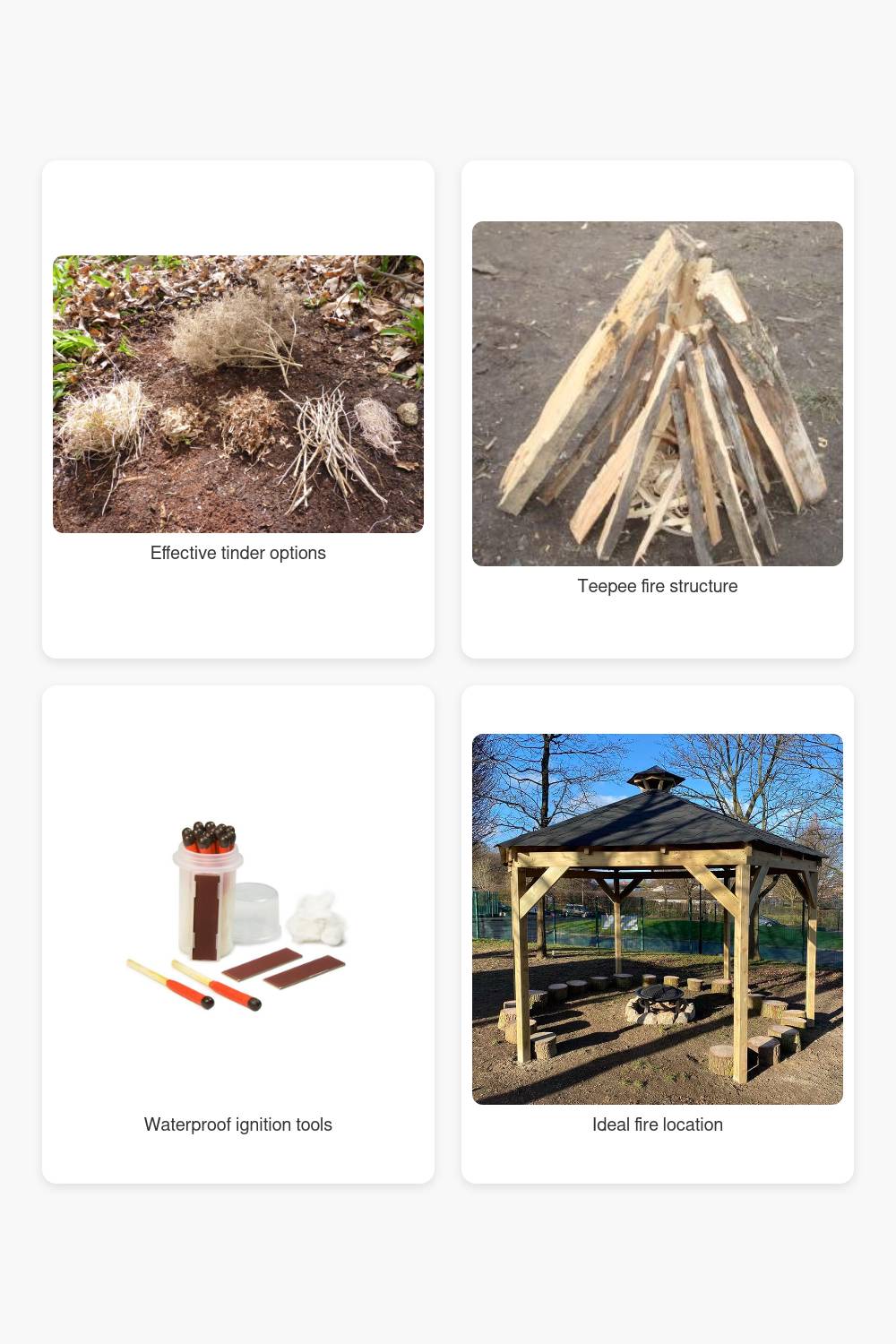
Successfully igniting a fire hinges on a blend of the right materials and effective techniques. Many newcomers make the mistake of underestimating the role of proper fire-building components, particularly when it comes to tinder and kindling. By mastering key methods for using these materials, you can enjoy a seamless fire-building experience—vital for both cozy evenings by the fireplace and enjoyable barbecues in your backyard.
- Selecting the right tinder is crucial. Always opt for dry options like finely shredded bark, dry grass, or even commercial fire starters, as these can catch sparks easily and ignite swiftly.
- Organizing materials using a teepee or log cabin structure enhances airflow. Setting up your tinder and kindling in a manner that promotes air circulation allows flames to grow steadily. This method significantly boosts the chances of a successful fire, especially in the initial stages.
- Carefully position kindling above your tinder. Start with small sticks or twigs, ensuring they don’t smother the tinder beneath. Light the kindling first; this approach helps maintain the spark and directs heat toward your main fuel sources.
- Protect your ignition sources from moisture. Keep matches, lighters, and any fire starters packed in waterproof containers. Wet conditions can disrupt your fire-starting plans, so being prepared is essential.
- Scout your environment for the right spot. Factors like wind, humidity, and available shelter play big roles in the success of your fire. Look for areas that shield from strong winds and gather materials beforehand for an efficient setup.
- Be innovative in survival situations. If conditions are harsh, tap into your creativity. Items such as dry leaves, birch bark, or even natural debris can serve as excellent fire starters when all else fails.
Practicing these techniques will equip you with invaluable skills that can elevate your outdoor adventures, whether you’re roasting marshmallows by a fire pit or enjoying a warm meal in the wilderness. Remember, every successful fire begins with the right foundation. For instance, using green or wet wood can complicate your efforts significantly, making it harder to achieve a reliable flame.
| Technique | Details |
|---|---|
| Tinder Selection | Use fine, dry materials like shredded bark or dry grass to ignite easily. 🔥 |
| Fire Structure | Employ a teepee or log cabin formation for improved airflow. 💨 |
| Kindling Placement | Position small twigs above the tinder to bolster the flame without smothering it. ✅ |
| Moisture Protection | Keep igniters in waterproof containers to avoid failure in wet conditions. 💧 |
| Environment Scouting | Evaluate wind, humidity, and shelter before starting your fire for best results. 🌳 |
| Resourcefulness | In tough situations, think outside the box with available natural materials. 🍂 |
*As an Amazon Associate I earn from qualifying purchases
How to Choose the Right Materials
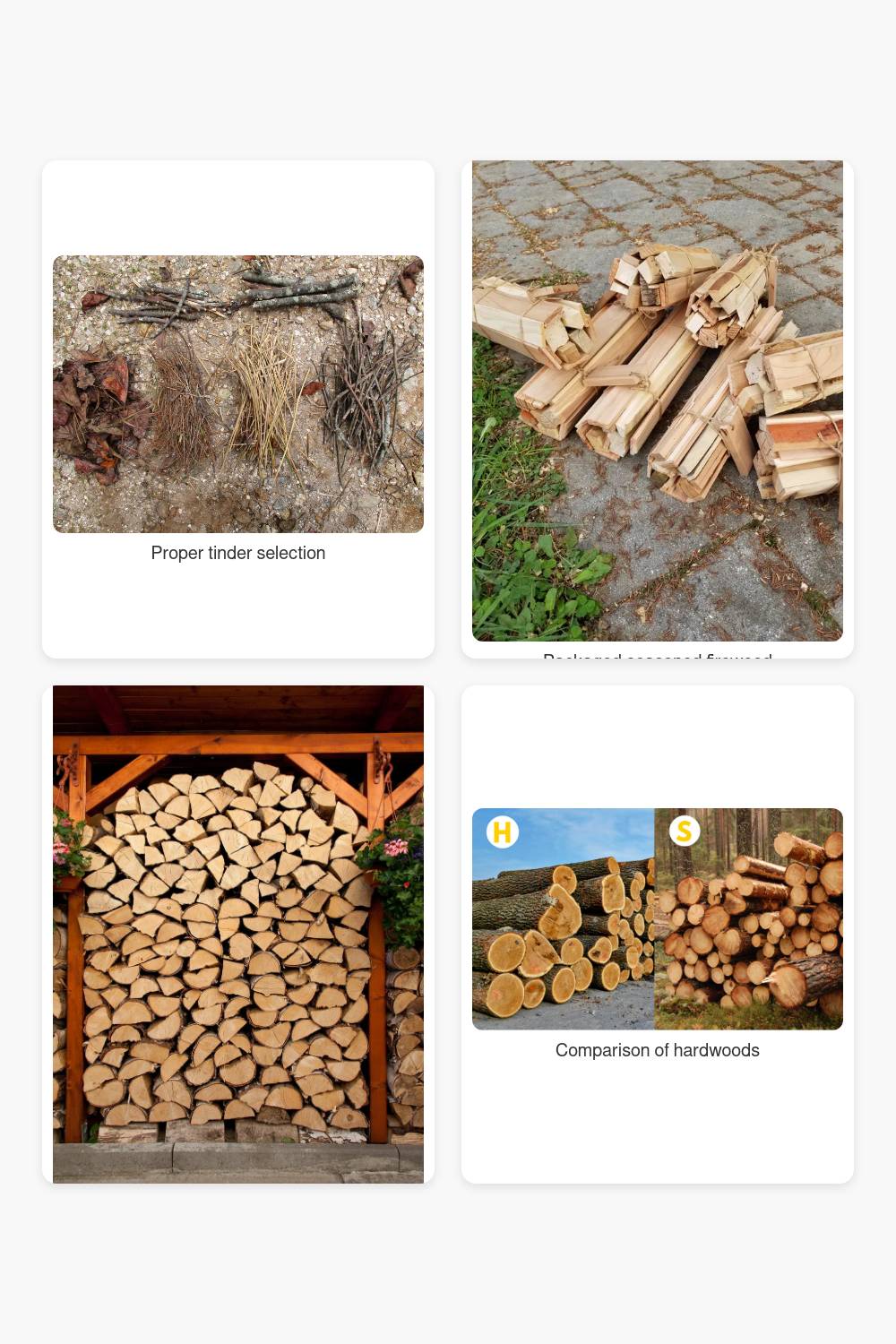
Selecting the right materials is pivotal in mitigating common fire starting missteps. By understanding the characteristics of firewood, tinder, and kindling, you’ll enhance your fire-building experience, whether you’re lighting a cozy indoor fireplace or an outdoor fire pit for a relaxing evening with friends.
- Prioritize dry tinder — Effective tinder is essential for ensuring your fire ignites quickly. Look for dry leaves, grass, or even specially designed fire starters that catch flame easily. The availability of these materials is often impacted by your surroundings, so scout around for what nature offers before your fire-building session.
- Opt for the right kindling — When choosing kindling, small sticks or branches the thickness of a pencil work best. They ignite quickly and provide the necessary heat to transition to larger fuels. If you’re in an outdoor setting, check for appropriate natural resources to gather that won’t take a toll on the ecosystem.
- Select seasoned firewood — For your logs, opt for seasoned hardwoods such as oak or maple. These types burn hotter and longer, which is crucial for maintaining a steady flame. Avoid using wet or green wood, as it tends to smolder and can create issues with smoke, hindering your fire’s efficiency.
- Consider your environment — Tailor your selection based on local vegetation. Areas with abundant coniferous trees will provide different materials compared to hardwood-heavy regions. Easy access to dry materials can significantly improve your chances of starting a successful fire.
In essence, the right combination of materials not only minimizes the potential for frustrations but also enhances the overall enjoyment of your fire experience. For further exploration into specialized techniques, particularly when wind may hinder your efforts, check out this resource on fire starter burn times.
| Material Type | Characteristics | Best Use |
|---|---|---|
| Tinder | Highly flammable, dry | Starting the fire |
| Kindling | Small, easily ignited sticks | Transition from tinder to firewood |
| Firewood | Seasoned hardwood, burns long | Main fuel for sustained heat |
Fire Building Tips: Safety First
When it comes to fire building, safety must take precedence. Whether you’re lighting up your cozy indoor fireplace or preparing for a night around the outdoor fire pit, adhering to essential safety practices ensures a controlled and enjoyable experience. Here are some critical fire-building safety tips you should keep in mind:
- Choose the right location: Always establish your fire in a designated area, such as a fire pit or barbecue, preferably situated away from flammable materials and structures. This reduces the risk of unintended fires. Prioritize any local fire regulations that dictate where you can safely light your fire.
- Create a ‘ring of safety’: Clear the ground around your fire area, maintaining a safe distance free from leaves, brush, or anything that could catch fire. This ‘ring of safety’ is essential to help contain the flames and prevent accidental spread.
- Use effective ignition materials: Beginners often misuse materials when trying to start a fire. Opt for dry leaves, twigs, or commercial fire starters that ignite easily and produce minimal smoke. Avoid using items like plastics, as they can release harmful toxins when burned.
- Ensure proper ventilation: In enclosed spaces, adequate ventilation is crucial to avoid the buildup of harmful fumes. Always prioritize airflow, particularly when using wood stoves or indoor fireplaces, to protect your indoor air quality.
- Extinguish fires completely: When it’s time to put the fire out, don’t just assume that it’s out after you douse it with water. Pour water over the ashes and stir them to ensure everything is completely extinguished. Ashes can remain hot long after the flames have died down, leading to dangerous flare-ups if not handled properly.
💡 Practicing these safety tips not only prepares you for a fun evening around the fire but also minimizes the risks associated with open flames, whether you’re at home or enjoying an outdoor adventure.
| Safety Tip | Description |
|---|---|
| Location | Designated areas reduce fire risks ✔️ |
| Ring of Safety | Cleared area prevents spread of flames 🔥 |
| Ignition Materials | Use materials that ignite easily, avoiding toxins ❌ |
| Ventilation | Crucial for indoor fires to avoid harmful fumes 🚪 |
| Complete Extinguishment | Ensure fires are fully out to prevent flare-ups ✔️ |
Avoiding Common Outdoor Fire Mistakes
When igniting a fire in an outdoor setting, especially for activities like barbecuing or camping, it’s essential to sidestep frequent pitfalls that can turn the experience from enjoyable to frustrating. Let’s delve into some critical mistakes to avoid and how to navigate them effectively.
- Choosing the Wrong Location: Setting up your fire too close to overhanging branches or dry grass can lead to hazardous fires. Ideally, find a clear, flat spot several feet away from any flammable materials to maintain a safe environment.
- Neglecting Wind Considerations: Wind can drastically affect fire behavior. Position your fire so the breeze is at your back. This not only improves visibility but also prevents smoke from blowing directly into your face, making for a more pleasant experience.
- Improper Moisture Management: The key to a successful ignition lies in the dryness of your materials. Wet wood or damp kindling can stubbornly resist combustion. Use dry tinder such as wood shavings, or consider utilizing fire starter kits for better results.
- Incorrect Material Layering: Many beginners struggle with the arrangement of their combustible materials. Techniques like the ‘teepee’ or ‘log cabin’ method are not just stylish; they also promote airflow, helping your fire to catch and sustain itself more easily.
- Ignoring Local Regulations: Always check local laws and regulations regarding open flames. Some areas may have burn bans or specifically designated fire pits to lessen wildfire risks; be responsible by adhering to these guidelines to ensure safety for yourself and the environment.
By steering clear of these common errors, you can enhance your outdoor fire experience, whether you’re gathering around a fire pit with friends or preparing for a week of camping. 🔥
Practical Tips for Fire Maintenance and Extinguishing
Once you’ve successfully started your fire, maintaining it and ensuring it is safely extinguished are vital steps for both safety and enjoyment. Whether you’re gathered around a backyard fire pit or an outdoor fireplace, keep these essential practices in mind to enjoy your fire responsibly and to minimize any environmental impact.
- Ensure a steady supply of dry fuel: Keeping your fire burning bright requires consistent fuel. Use seasoned wood or dry charcoal to maintain steady flames. Avoid the temptation to throw in wet or green wood, as this not only smothers the fire but also produces excessive smoke.
- Utilize a fire ring: A designated fire ring or fire pit is crucial for containing your flames. This prevents the fire from spreading and helps maintain a controlled burn environment, preserving the beauty of your outdoor setting.
- Adjust logs for airflow: To keep your fire thriving, regularly reposition the logs. This promotes better airflow and helps reduce smoke. However, avoid excessive stirring, as it can lead to inefficient burns and loss of heat.
- Choose the right extinguishing method: When it’s time to put out the fire, always opt for water or sand. If using water, pour it gradually to avoid a sudden temperature change that could cause steam explosions. Sand is also effective as it suffocates the flames without introducing moisture.
- Double-check for residual heat: After extinguishing, be sure to check for any lingering hot spots. Ensuring everything is cool to the touch is crucial for preventing unintended flare-ups and maintaining safety.
- Respect local regulations: Whether you’re using a fire pit at home or enjoying a camping excursion, always adhere to local fire safety regulations. This not only safeguards your environment but also protects against fines or violations.
- Practice Leave No Trace principles: Always clean up after your fire. Make sure to fully extinguish the flames, pick up any debris, and leave your space as you found it. This helps protect wildlife and natural habitats for future enjoyment.
Keeping these tips in mind will enhance your experience around fireplaces, barbecues, and outdoor fire pits while ensuring that both safety and environmental responsibility are prioritized. By mastering the maintenance and extinguishing of fire, you’ll create lasting memories without risking the beauty of your surroundings. 🔥 For those interested in how to use fire starters effectively, check out this link for insights on charcoal techniques.
Frequently Asked Questions
Below are some frequently asked questions that can guide you in honing your fire-starting skills and ensuring safe and successful outdoor fires.
